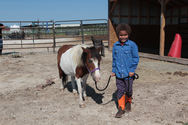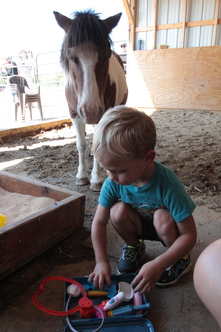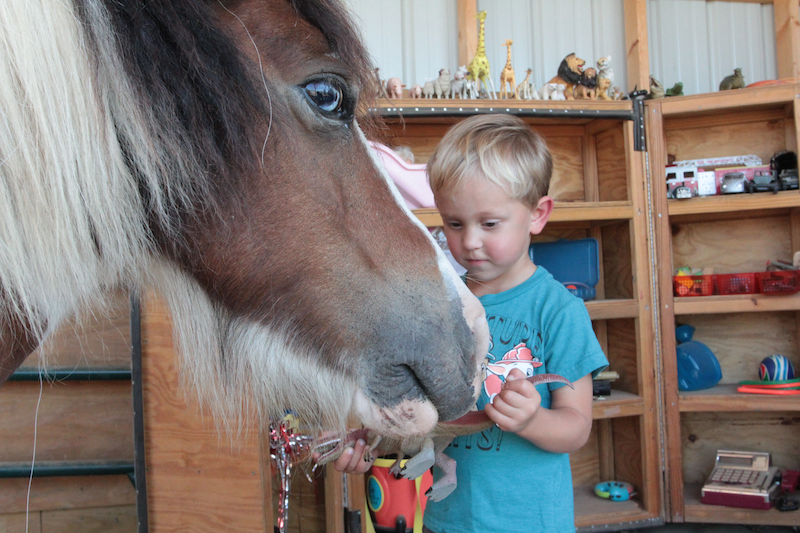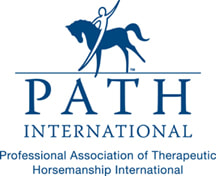|
Bob: Welcome, Mama Mia! It's such a pleasure to have you here for this interview. Let's dive right in. Can you tell us a bit about your experience with Equine-Partnered Play Therapy and why you enjoy working with young children? Mama Mia: Thank you, Bob! I'm thrilled to be here. Well, my journey with Equine-Partnered Play Therapy began about seven years ago, and it's been an incredibly fulfilling experience ever since. There's just something magical about connecting with children and helping them through the challenges they face using the unique bond we share with them as play therapy horses. Bob: Absolutely, there's something truly special about the bond between horses and children. Could you elaborate on how Equine-Partnered Play Therapy works? Mama Mia: Of course! Equine-Partnered Play Therapy is a form of therapy where horses like us are integrated into the therapeutic process to help children develop emotional regulation, improve social skills, and work through various emotional or behavioral issues. During sessions, children engage in various activities with us, such as playing with toys, grooming, leading, or even just spending quiet time together in our presence. These activities provide opportunities for children to build trust, learn empathy, and develop confidence.  Bob: That sounds incredibly impactful. Can you share some of your most memorable experiences working with children in equine partnered play therapy? Mama Mia: Oh, there have been so many memorable moments! One that stands out to me is when I worked with a young boy who was struggling with severe anxiety. Through our sessions together, he gradually learned to calm himself by watching how I overcame my fears when something startled me. Watching him gain confidence and learn to manage his anxiety was incredibly rewarding. Bob: That's truly inspiring, Mama Mia. I'm sure our audience would love to know more about the collaborative approach involved in EPPT.  Mama Mia: Of course, Bob. EPPT involves a team effort between licensed mental health professionals trained in play therapy and equine professionals who understand horse behavior and child development. Together with our human co-facilitators, we create a supportive environment where children feel valued and understood. Bob: Thank you for sharing that, Mama Mia. Before we wrap up, could you tell us how EPPT impacts children's motivation and enthusiasm for therapy? Mama Mia: Certainly, Bob. The mere presence of horses often ignites excitement and motivation in children to participate in therapy sessions. Knowing they'll spend time with us fosters anticipation and enthusiasm, making the therapeutic process more engaging and effective. Bob: That's wonderful to hear, Mama Mia. It's wonderful to have you as my equine play therapy co-facilitator. Your dedication to this work is truly inspiring. Before we wrap up, is there anything else you'd like to share about your love for working with young children in Equine-Partnered Play Therapy? Mama Mia: Just that every day I am grateful for the opportunity to make a positive impact in the lives of these children. The bond we share with them is truly special, and I believe in the transformative power of equine therapy. It's an honor to be a part of their journey towards healing and growth. Want to work with Mama Mia in Equine-Partnered Play Therapy? Fill out a Client Interest Form! Interested in hearing more from Mama Mia and receiving special tokens of her affection? Join Mama Mia's Carrot Club!
0 Comments
|
AuthorSTEPS With Horses Archives
June 2024
Categories
All
|
Let's stay in touch!
Mailing AddressP.O. Box 123737
Fort Worth, TX 76121 |
Telephone |
|
A Texas Nonprofit Corporation and a 501(c)(3) Tax-Exempt Charitable Organization
Copyright 2024 S.T.E.P.S. With Horses

 RSS Feed
RSS Feed
